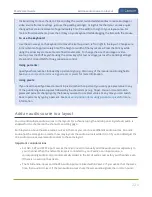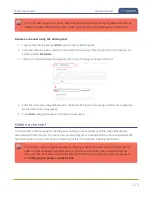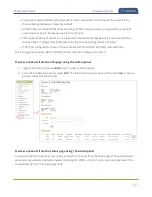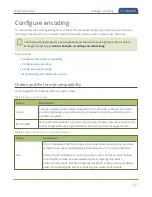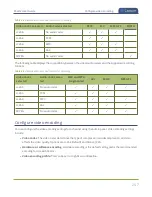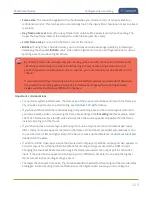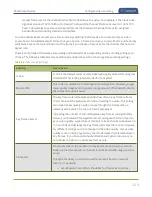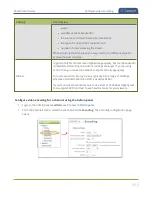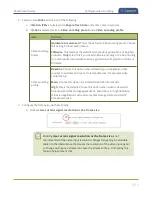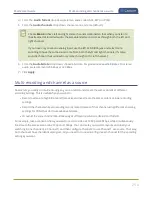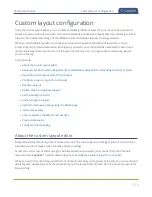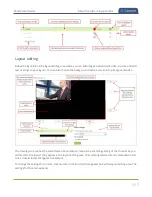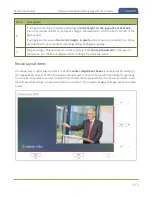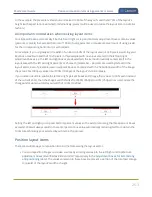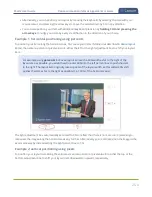
Pearl-2 User Guide
Configure video encoding
smaller frame size for the channel and let Pearl-2 downscale the video. For example, if the input video
signal resolution is 1920×1080 (a 16:9 aspect ratio) and the channel's frame size is set to 1280×720,
Pearl-2 downscales the video and streams/records the channel at the lower frame size, using less
bandwidth and producing smaller recorded files.
You can add black bars around your video source by adjusting the frame size. For example, if your video
source has a 16:9 widescreen/HD format but you need a 4:3 frame size on your output, Pearl-2 automatically
adds black bars to the top and bottom of the frame if you choose a frame size for the channel that has a 4:3
aspect ratio.
There is some trade off between video quality and bandwidth size, depending on the encoding settings you
choose. The following table lists some additional considerations when choosing video encoding settings.
Table 46
Video encoding settings
Setting
Description
H.264
H.264 is the default codec and provides high quality video while using low
bandwidth. This is the preferred codec for the system.
Motion JPEG
This codec is suitable for streaming and recording video, however you get
lower quality images and it requires a large amount of bandwidth. Motion
JPEG does not support audio.
Key frame interval
The key frame interval feature specifies how often a key frame (a frame
that contains all the pixels) is sent when streaming the video. This setting
also impacts how quickly a video moves through the frames when a
viewer uses the search function of their media player.
Increasing the number of seconds between key frames can significantly
reduce your bandwidth and system resource usage with minor impact to
your video quality. A good rule of thumb is to keep the interval between 2
to 3 seconds and decrease the key frame interval as the motion increases.
Try different settings and note changes in the video quality. If your video
quality is poor and jittery you may need to decrease the interval between
key frames. If you have unlimited bandwidth and system resources you
can choose an option to stream key frames only.
Frame rate
Frame rate reflects the number of images that are encoded per second.
Reducing the frame rate for a channel reduces bandwidth usage, and vice
versa.
The system's ability to maintain a set frame rate is based on several
factors, for example:
l
overall system load affects the ability for the device to process
249


